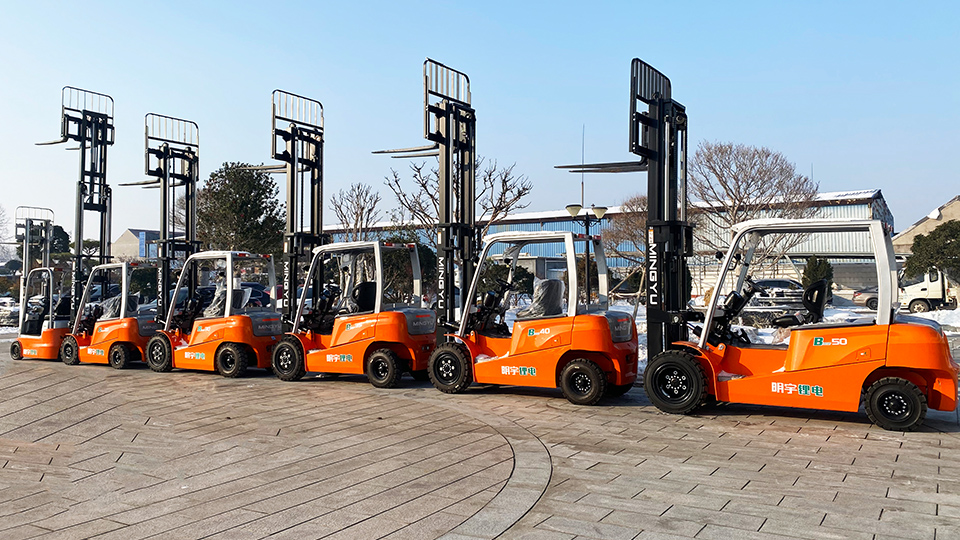
A Technical Deep Dive into OSHA Compliance and the Hybrid Certification Model
Introduction: The Digital Promise vs. The Physical Reality
The rapid evolution of online education has transformed how professionals acquire specialized knowledge, and the field of heavy equipment operation is no exception. In the logistics, warehousing, and manufacturing sectors, the forklift—or Powered Industrial Truck (PIT), as it is formally known—is indispensable. Consequently, thousands of aspiring operators search for the quickest, most convenient, and often cheapest path to certification, leading them to the ubiquitous promise of "100% online forklift certification."
This technical article will meticulously examine the question: Can a forklift certification be obtained entirely online? The short, unambiguous answer is no. Full, legally compliant forklift certification, as mandated by the U.S. Occupational Safety and Health Administration (OSHA), is a rigorous, three-part process that cannot be completed without a critical, in-person component.
The intention of this article is not to dismiss online training providers, many of whom offer excellent, OSHA-compliant theoretical instruction. Rather, it is to provide a comprehensive, technically accurate guide for both operators and employers on navigating the regulatory requirements of OSHA Standard 29 CFR 1910.178, specifically its mandate for Powered Industrial Truck (PIT) operator training. We will break down the three non-negotiable phases of certification, delineate the precise role of the online component, and clarify the critical, ultimate responsibility held by the employer in the certification process. Misunderstanding these requirements can lead to severe penalties, dangerous workplace conditions, and invalid certification—a risk too significant for any operation to ignore.

I. The Core Regulatory Framework: OSHA Standard 1910.178
To understand why a purely online certification is inadequate, one must first grasp the foundation of the federal training requirement. OSHA mandates that all operators of Powered Industrial Trucks be competently trained and certified before operating the equipment. This is not a suggestion but a legal requirement, and the standard, 29 CFR 1910.178(l)(1), is explicit in its structure, demanding a multi-faceted approach to training and evaluation.
The full certification process is a three-legged stool, all three of which must be successfully completed and documented for a certification to be valid.
The Three Non-Negotiable Components of Forklift Certification
1. Formal Instruction (The Theoretical Component)
This is the only component that can be satisfied through a 100% online program. Formal instruction imparts the foundational, general knowledge required for safe operation. OSHA defines this as:
Lectures, discussions, interactive computer learning (online courses), video tapes, or written material.
Core Topics: The theoretical training must cover OSHA-mandated topics, including:
Operating instructions, warnings, and precautions for the specific type of truck.
Differences between the truck and an automobile (e.g., steering dynamics).
Vehicle controls and instrumentation.
Engine or motor operation (fueling and battery charging/replacement).
Vehicle capacity and stability principles (the center of gravity and stability triangle).
Pre-operational and post-operational inspection and maintenance checks.
2. Practical Training (The Hands-On Component)
This phase is where the theoretical knowledge transitions to real-world application. It requires demonstrations performed by a qualified trainer, followed by practical exercises performed by the trainee. This training must be conducted in a real or simulated work environment.
Requirement: The trainee must physically practice operating the lift truck under the direct supervision of a qualified person.
Focus: This training is highly site- and equipment-specific, covering maneuvers like traveling with and without a load, stacking and unstacking, negotiating ramps, and navigating the specific aisles, docks, and surface conditions of the actual workplace.
Impossibility of Online Fulfillment: By its very definition, practical training requires physical interaction with the powered industrial truck and the worksite environment. A purely digital interface cannot replicate the nuanced sensory, spatial, and dynamic challenges of operating a multi-ton machine.
3. Evaluation of Operator Performance (The Certification Component)
The third, and most crucial, step is the formal evaluation. This is the point where the operator is officially certified. OSHA mandates that a qualified person—who possesses the requisite knowledge, training, and experience—must observe the operator performing the required tasks in the workplace.
The Final Test: The evaluation assesses the operator's ability to safely and competently operate the forklift in the conditions they will actually encounter on the job.
The Certification Authority: This is a critical technical point: OSHA does not certify individual operators or training programs. Instead, the employer is legally responsible for certifying that the operator has completed the required training and evaluation and is competent to operate a PIT safely in that specific workplace. The online vendor's "certificate" is only proof of completing the formal instruction.
Documentation: The employer must maintain a certification record that includes the operator’s name, the date of the training, the date of the evaluation, and the identity of the person(s) performing the training or evaluation.

II. The Value and Limitations of Online Forklift Training
Given that online courses cannot grant full certification, why are they so popular, and what legitimate role do they play in a compliant training strategy?
A. The Strategic Advantages of the Online Component
Online training, often referred to as a "blended learning approach," offers significant benefits that make it an attractive and efficient solution for the formal instruction requirement:
Flexibility and Pacing: Operators can complete the theoretical coursework at their own pace, on any schedule, and from any location, minimizing disruption to the work schedule.
Consistency: Digital platforms ensure that every trainee receives the exact same high-quality instructional material, lecture content, and safety information, eliminating variability between different in-person instructors.
Cost-Effectiveness: For employers with a high turnover or a large workforce, online formal instruction is generally more affordable than hiring an external trainer for classroom time.
Documentation: Online learning management systems (LMS) automatically track completion, test scores, and issue immediate certificates of formal instruction completion, which streamlines the record-keeping process for the employer.
B. Technical Limitations and Buyer Beware
The primary limitation is the lack of the practical and evaluation components. Any online vendor claiming to provide a "full and complete license" or "100% certification" is being misleading or is outright non-compliant with OSHA regulations.
The "Certificate" Trap: The document issued by an online course is technically a Certificate of Training Completion for the theoretical part. It is not an official, legally recognized Forklift Operator Certification Card until the employer completes the in-house practical training and evaluation.
No Equipment or Worksite Specificity: The formal instruction is general. It does not—and cannot—account for the unique hazards of a specific workplace (e.g., surface conditions, loading dock ramps, narrow aisle widths, pedestrian traffic, or the specific operating manual of a Class III electric pallet jack versus a Class IV internal combustion engine truck).
III. The Employer's Mandate: The Linchpin of Certification
OSHA places the ultimate burden of responsibility for certification squarely on the shoulders of the employer. This is the central legal mechanism that prevents an online-only certification from being valid.
A. The Qualified Person
The practical training and final evaluation must be conducted by a "qualified person." OSHA defines this person as someone who, by possession of a recognized degree, certificate, or professional standing, or who by extensive knowledge, training, and experience, has successfully demonstrated the ability to solve or resolve problems relating to the subject matter, the work, or the project. This means the employer can:
Use an In-House Trainer: An existing employee who is experienced and has been trained to instruct and evaluate can be designated as the qualified person.
Hire an External Trainer: Contract with a third-party safety or training firm to conduct the on-site evaluation.
B. Site- and Equipment-Specific Training
The employer must tailor the instruction to cover workplace-related topics as outlined in the regulation (29 CFR 1910.178(l)(3)(ii)). These topics include:
Surface conditions where the vehicle will be operated (e.g., wet, uneven, sloped).
Composition and manipulation of loads (e.g., oversized, unstable, or stacked to extreme height).
Pedestrian traffic and shared pathways.
Narrow aisles and restricted areas.
Hazardous locations (e.g., areas with flammable vapors or poor ventilation).
C. The Certification and Recertification Cycle
The certification is not permanent. The employer must conduct a performance evaluation of each operator at least once every three years. Refresher training and subsequent re-evaluation are also mandatory if:
The operator is involved in an accident or a near-miss incident.
The operator has been observed operating the truck in an unsafe manner.
The operator is assigned to operate a different type of truck they have not been previously trained on.
A condition in the workplace changes in a manner that could affect the safe operation of the truck.
IV. Conclusion: The Blended Approach as the Only Compliant Path
In summary, the answer to "Can you get a forklift certification online?" is a definitive no, but with a crucial technical caveat: You can fulfill the theoretical formal instruction requirement online.
The fully compliant and legally defensible path to certification requires a blended approach:
Online Formal Instruction: Complete an OSHA-compliant theoretical course, receive the Certificate of Completion.
Employer-Led Practical Training: An employer (or qualified, designated trainer) provides hands-on practice using the specific equipment in the actual workplace environment.
Employer Performance Evaluation and Certification: The qualified person observes, evaluates, and formally certifies the operator's competency on-site.
For both workers seeking certification and employers aiming for compliance, the key takeaway is clarity on the OSHA mandate. The convenience of online learning is a powerful tool for streamlining the knowledge transfer, but it is ultimately the physical, in-person demonstration of skill and competence in the working environment, certified by the employer, that constitutes a true and valid forklift certification. Only by embracing this blended model can a business ensure both regulatory compliance and, more importantly, the highest level of safety for its operators and its entire workforce.
Name: selena
Mobile:+86-13176910558
Tel:+86-0535-2090977
Whatsapp:8613181602336
Email:vip@mingyuforklift.com
Add:Xiaqiu Town, Laizhou, Yantai City, Shandong Province, China